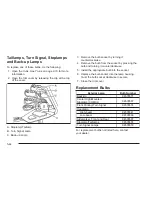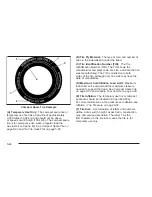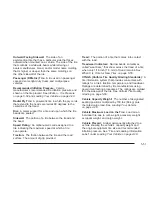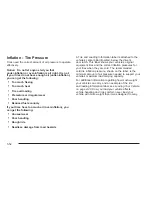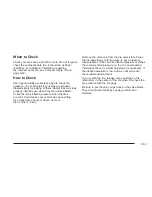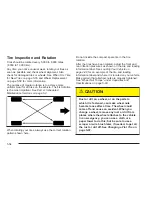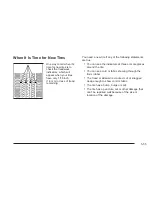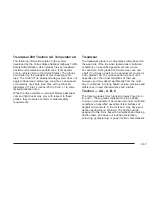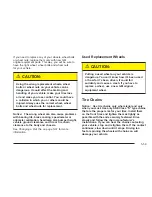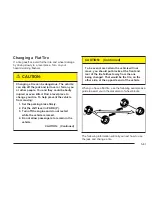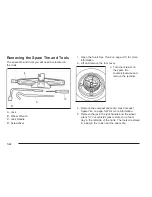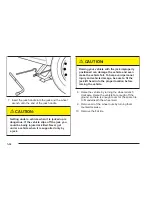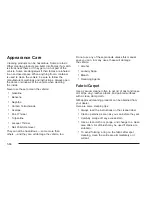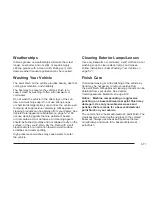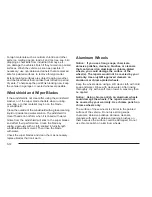
Temperature — A, B, C
The temperature grades are A (the highest), B, and C,
representing the tire’s resistance to the generation
of heat and its ability to dissipate heat when tested
under controlled conditions on a specified indoor
laboratory test wheel. Sustained high temperature can
cause the material of the tire to degenerate and
reduce tire life, and excessive temperature can lead to
sudden tire failure. The grade C corresponds to a
level of performance which all passenger car tires must
meet under the Federal Motor Vehicle Safety Standard
No. 109. Grades B and A represent higher levels of
performance on the laboratory test wheel than the
minimum required by law.
Warning: The temperature grade for this tire is
established for a tire that is properly inflated and not
overloaded. Excessive speed, underinflation, or
excessive loading, either separately or in combination,
can cause heat buildup and possible tire failure.
Wheel Alignment and Tire Balance
The tires and wheels on your vehicle were aligned
and balanced carefully at the factory to give you the
longest tire life and best overall performance.
Adjustments to wheel alignment and tire balancing will
not be necessary on a regular basis. However, if
you notice unusual tire wear or your vehicle pulling to
one side or the other, the alignment may need to
be checked. If you notice your vehicle vibrating when
driving on a smooth road, your tires and wheels
may need to be rebalanced. See your dealer for proper
diagnosis.
Wheel Replacement
Replace any wheel that is bent, cracked or badly rusted
or corroded. If wheel nuts keep coming loose, the
wheel, wheel bolts and wheel nuts should be replaced.
If the wheel leaks air, replace it (except some
aluminum wheels, which can sometimes be repaired).
See your dealer if any of these conditions exist.
Your dealer will know the kind of wheel you need.
Each new wheel should have the same load-carrying
capacity, diameter, width, offset and be mounted
the same way as the one it replaces.
5-58
Summary of Contents for 2005 Epica
Page 5: ...These are some examples of symbols that may be found on the vehicle v ...
Page 6: ... NOTES vi ...
Page 18: ...Put someone on it Get it up to speed Then stop the vehicle The rider does not stop 1 12 ...
Page 46: ...A Lower Anchorage B Lower Anchorage C Top Tether A Lower Anchorage B Lower Anchorage 1 40 ...
Page 104: ... NOTES 2 34 ...
Page 107: ... NOTES 3 3 ...
Page 108: ...Instrument Panel Overview 3 4 ...
Page 202: ... NOTES 4 36 ...
Page 214: ...Engine Compartment Overview When you open the hood here is what you will see 5 12 ...
Page 282: ...5 80 ...
Page 314: ...Maintenance Record cont d Date Odometer Reading Serviced By Maintenance Record 6 28 ...
Page 315: ...Maintenance Record cont d Date Odometer Reading Serviced By Maintenance Record 6 29 ...
Page 316: ...Maintenance Record cont d Date Odometer Reading Serviced By Maintenance Record 6 30 ...

